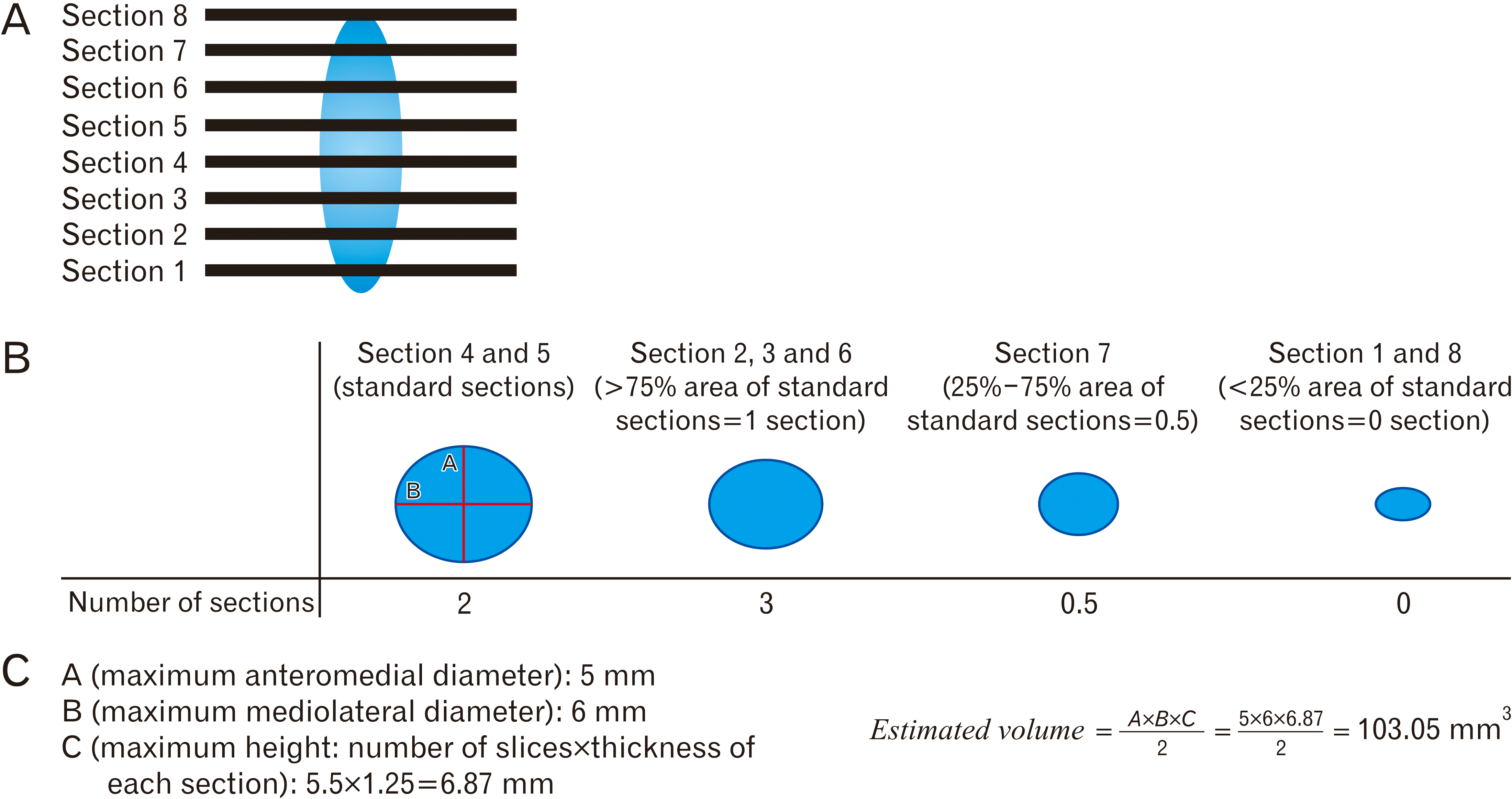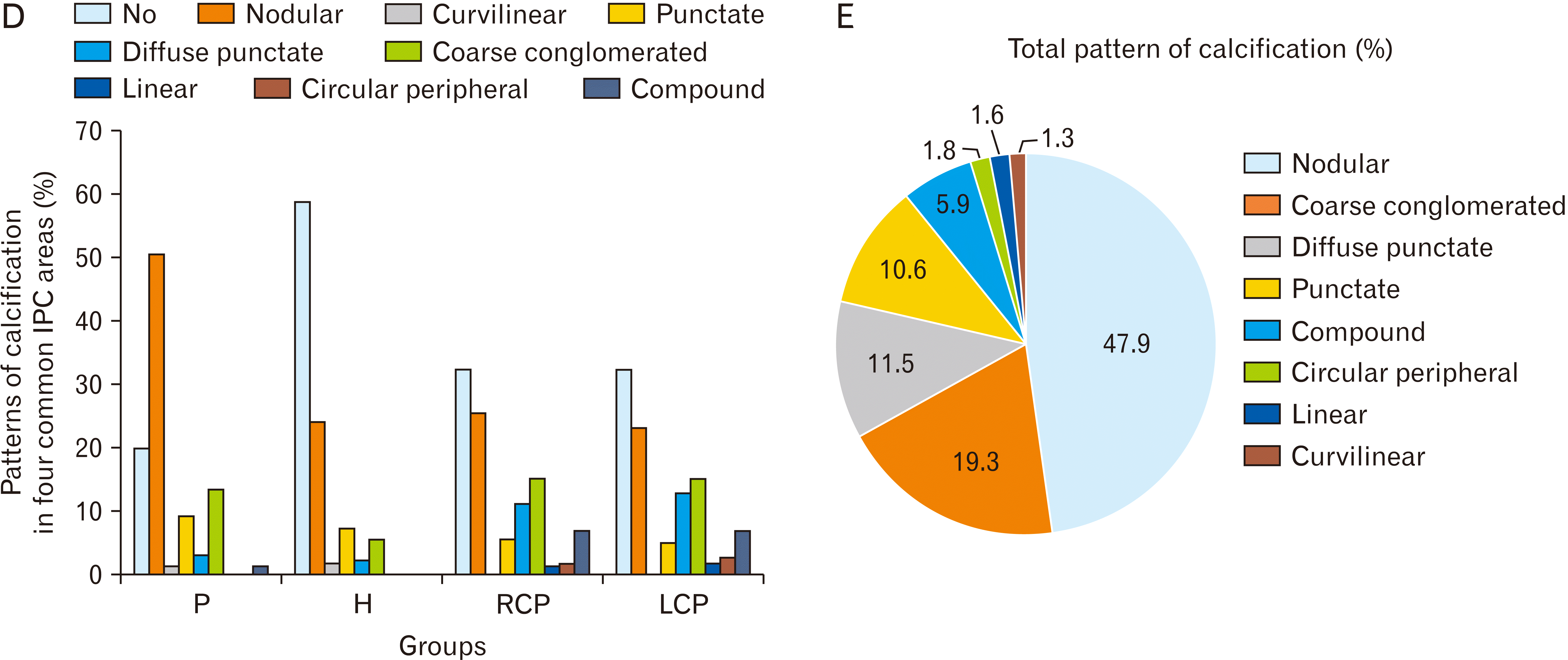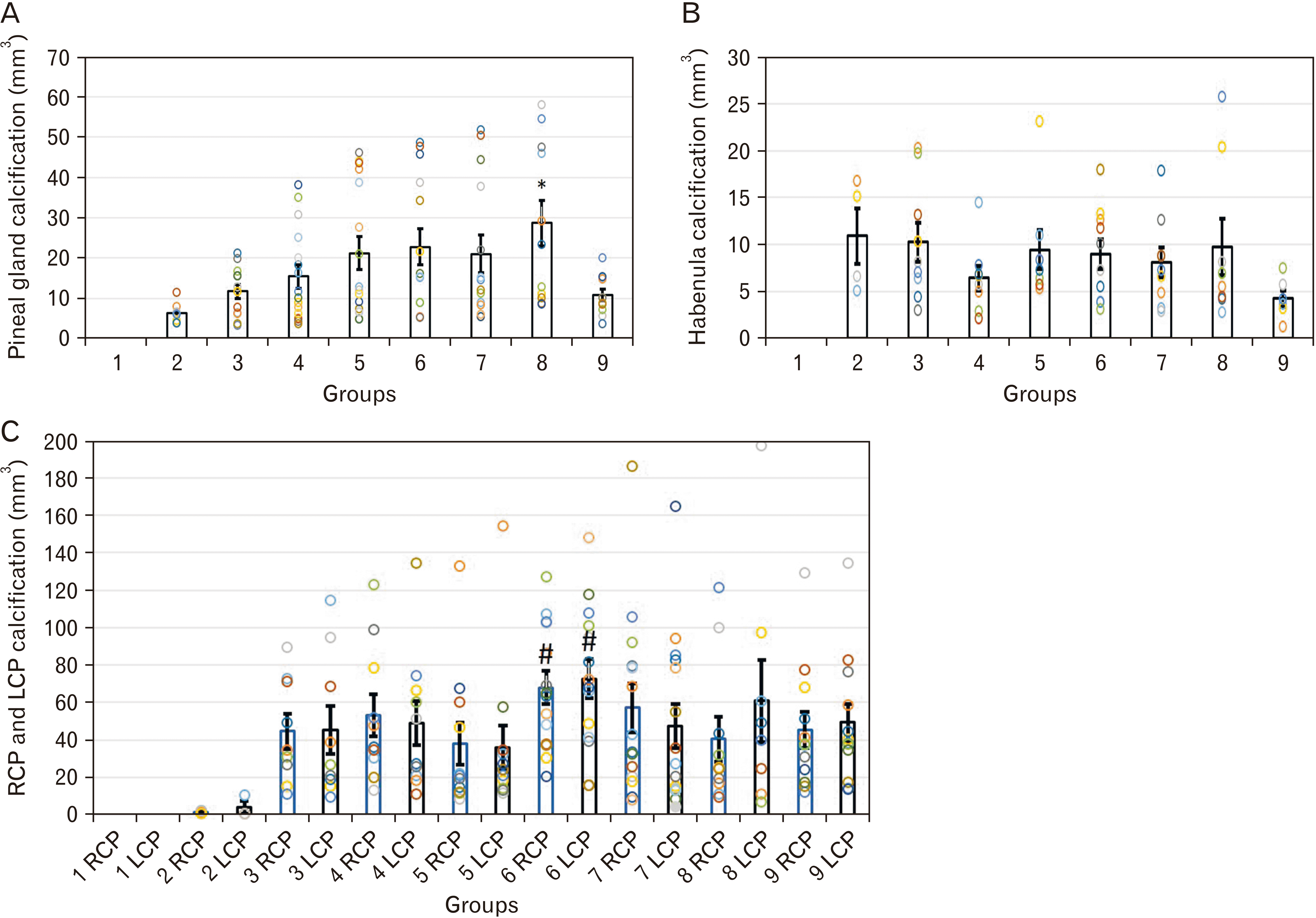1. Saade C, Najem E, Asmar K, Salman R, El Achkar B, Naffaa L. 2019; Intracranial calcifications on CT: an updated review. J Radiol Case Rep. 13:1–18. DOI:
10.3941/jrcr.v13i8.3633. PMID:
31558966. PMCID:
PMC6738489.
2. Spector R, Keep RF, Robert Snodgrass S, Smith QR, Johanson CE. 2015; A balanced view of choroid plexus structure and function: focus on adult humans. Exp Neurol. 267:78–86. DOI:
10.1016/j.expneurol.2015.02.032. PMID:
25747036.

3. Møller M, Baeres FM. 2002; The anatomy and innervation of the mammalian pineal gland. Cell Tissue Res. 309:139–50. DOI:
10.1007/s00441-002-0580-5. PMID:
12111544.

5. Adeeb N, Mortazavi M, Tubbs RS, Cohen-Gadol A. 2012; The cranial dura mater: a review of its history, embryology, and anatomy. Childs Nerv Syst. 28:827–37. DOI:
10.1007/s00381-012-1744-6. PMID:
22526439.

7. Pilli VK, Behen ME, Hu J, Xuan Y, Janisse J, Chugani HT, Juhász C. 2017; Clinical and metabolic correlates of cerebral calcifications in Sturge-Weber syndrome. Dev Med Child Neurol. 59:952–8. DOI:
10.1111/dmcn.13433. PMID:
28397986. PMCID:
PMC5568960.

8. Dinizio A, Vincent J, Nickerson J. 2015; Intracranial calcifications in the pediatric age group: an imaging review. J Pediatr Neuroradiol. 4:49–59. DOI:
10.1055/s-0036-1583312.

9. Kim JM, Park KY, Bae JH, Han SH, Jeong HB, Jeong D. 2019; Intracranial arterial calcificationes can reflect cerebral atherosclerosis burden. J Clin Neurol. 15:38–45. DOI:
10.3988/jcn.2019.15.1.38. PMID:
30375758. PMCID:
PMC6325360.

11. Kontzialis M, Huisman TAGM. 2018; Toxic-metabolic neurologic disorders in children: a neuroimaging review. J Neuroimaging. 28:587–95. DOI:
10.1111/jon.12551. PMID:
30066477.

12. Daghighi MH, Rezaei V, Zarrintan S, Pourfathi H. 2007; Intracranial physiological calcifications in adults on computed tomography in Tabriz, Iran. Folia Morphol (Warsz). 66:115–9.
14. Sedghizadeh PP, Nguyen M, Enciso R. 2012; Intracranial physiological calcifications evaluated with cone beam CT. Dentomaxillofac Radiol. 41:675–8. DOI:
10.1259/dmfr/33077422. PMID:
22842632. PMCID:
PMC3528191.

15. Turgut AT, Karakaş HM, Ozsunar Y, Altın L, Ceken K, Alıcıoğlu B, Sönmez I, Alparslan A, Yürümez B, Celik T, Kazak E, Geyik PÖ, Koşar U. 2008; Age-related changes in the incidence of pineal gland calcification in Turkey: a prospective multicenter CT study. Pathophysiology. 15:41–8. DOI:
10.1016/j.pathophys.2008.02.001. PMID:
18420391.

16. Yalcin A, Ceylan M, Bayraktutan OF, Sonkaya AR, Yuce I. 2016; Age and gender related prevalence of intracranial calcifications in CT imaging; data from 12,000 healthy subjects. J Chem Neuroanat. 78:20–4. DOI:
10.1016/j.jchemneu.2016.07.008. PMID:
27475519.

17. Kothari RU, Brott T, Broderick JP, Barsan WG, Sauerbeck LR, Zuccarello M, Khoury J. 1996; The ABCs of measuring intracerebral hemorrhage volumes. Stroke. 27:1304–5. DOI:
10.1161/01.STR.27.8.1304. PMID:
8711791.

18. Webb AJ, Ullman NL, Morgan TC, Muschelli J, Kornbluth J, Awad IA, Mayo S, Rosenblum M, Ziai W, Zuccarrello M, Aldrich F, John S, Harnof S, Lopez G, Broaddus WC, Wijman C, Vespa P, Bullock R, Haines SJ, Cruz-Flores S, Tuhrim S, Hill MD, Narayan R, Hanley DF. 2015; Accuracy of the ABC/2 score for intracerebral hemorrhage: systematic review and analysis of MISTIE, CLEAR-IVH, and CLEAR III. Stroke. 46:2470–6. DOI:
10.1161/STROKEAHA.114.007343. PMID:
26243227. PMCID:
PMC4550520.

19. Won SY, Zagorcic A, Dubinski D, Quick-Weller J, Herrmann E, Seifert V, Konczalla J. 2018; Excellent accuracy of ABC/2 volume formula compared to computer-assisted volumetric analysis of subdural hematomas. PLoS One. 13:e0199809. DOI:
10.1371/journal.pone.0199809. PMID:
29944717. PMCID:
PMC6019668.

20. Macpherson P, Matheson MS. 1979; Comparison of calcification of pineal, habenular commissure and choroid plexus on plain films and computed tomography. Neuroradiology. 18:67–72. DOI:
10.1007/BF00344824. PMID:
471224.

21. Ciavarella C, Gallitto E, Ricci F, Buzzi M, Stella A, Pasquinelli G. 2017; The crosstalk between vascular MSCs and inflammatory mediators determines the pro-calcific remodelling of human atherosclerotic aneurysm. Stem Cell Res Ther. 8:99. DOI:
10.1186/s13287-017-0554-x. PMID:
28446225. PMCID:
PMC5406974.

22. Tan DX, Xu B, Zhou X, Reiter RJ. 2018; Pineal calcification, melatonin production, aging, associated health consequences and rejuvenation of the pineal gland. Molecules. 23:301. DOI:
10.3390/molecules23020301. PMID:
29385085. PMCID:
PMC6017004.

23. Kitkhuandee A, Sawanyawisuth K, Johns J, Kanpittaya J, Tuntapakul S, Johns NP. 2014; Pineal calcification is a novel risk factor for symptomatic intracerebral hemorrhage. Clin Neurol Neurosurg. 121:51–4. DOI:
10.1016/j.clineuro.2014.03.019. PMID:
24793475.

25. Kwak R, Takeuchi F, Yamamoto N, Nakamura T, Kadoya S. 1988; Intracranial physiological calcification on computed tomography (Part 2): calcification in the choroid plexus of the lateral ventricles. No To Shinkei. 40:707–11. Japanese.
26. Whitehead MT, Oh C, Raju A, Choudhri AF. 2015; Physiologic pineal region, choroid plexus, and dural calcifications in the first decade of life. AJNR Am J Neuroradiol. 36:575–80. DOI:
10.3174/ajnr.A4153. PMID:
25355815. PMCID:
PMC8013049.








 PDF
PDF Citation
Citation Print
Print



 XML Download
XML Download